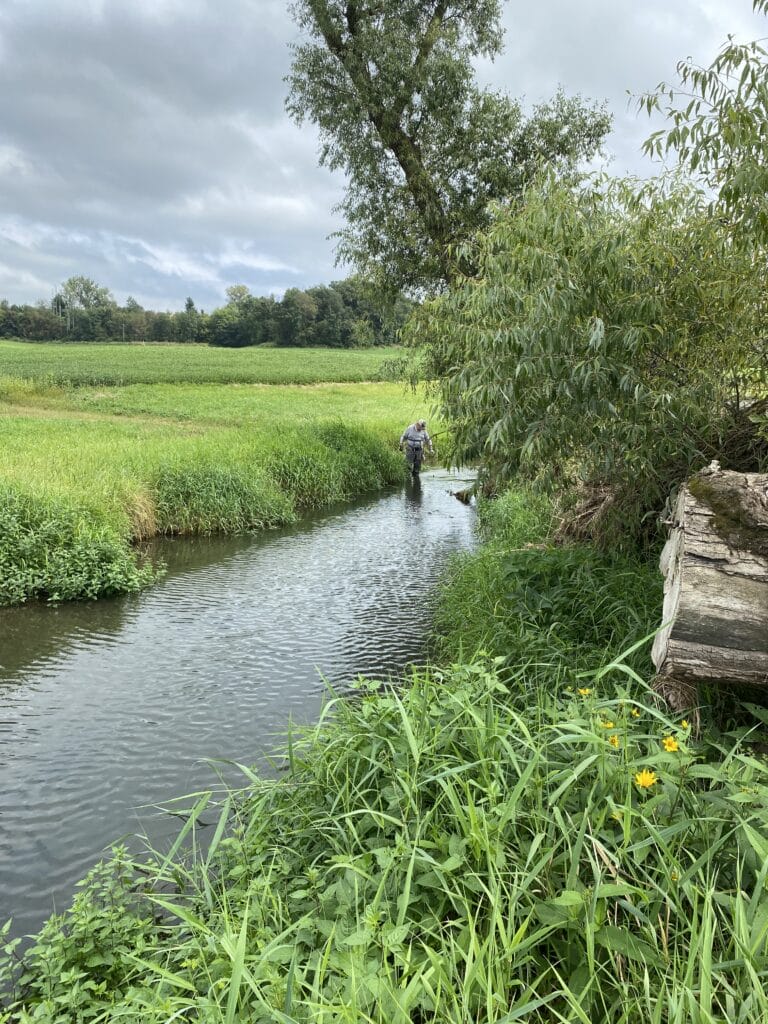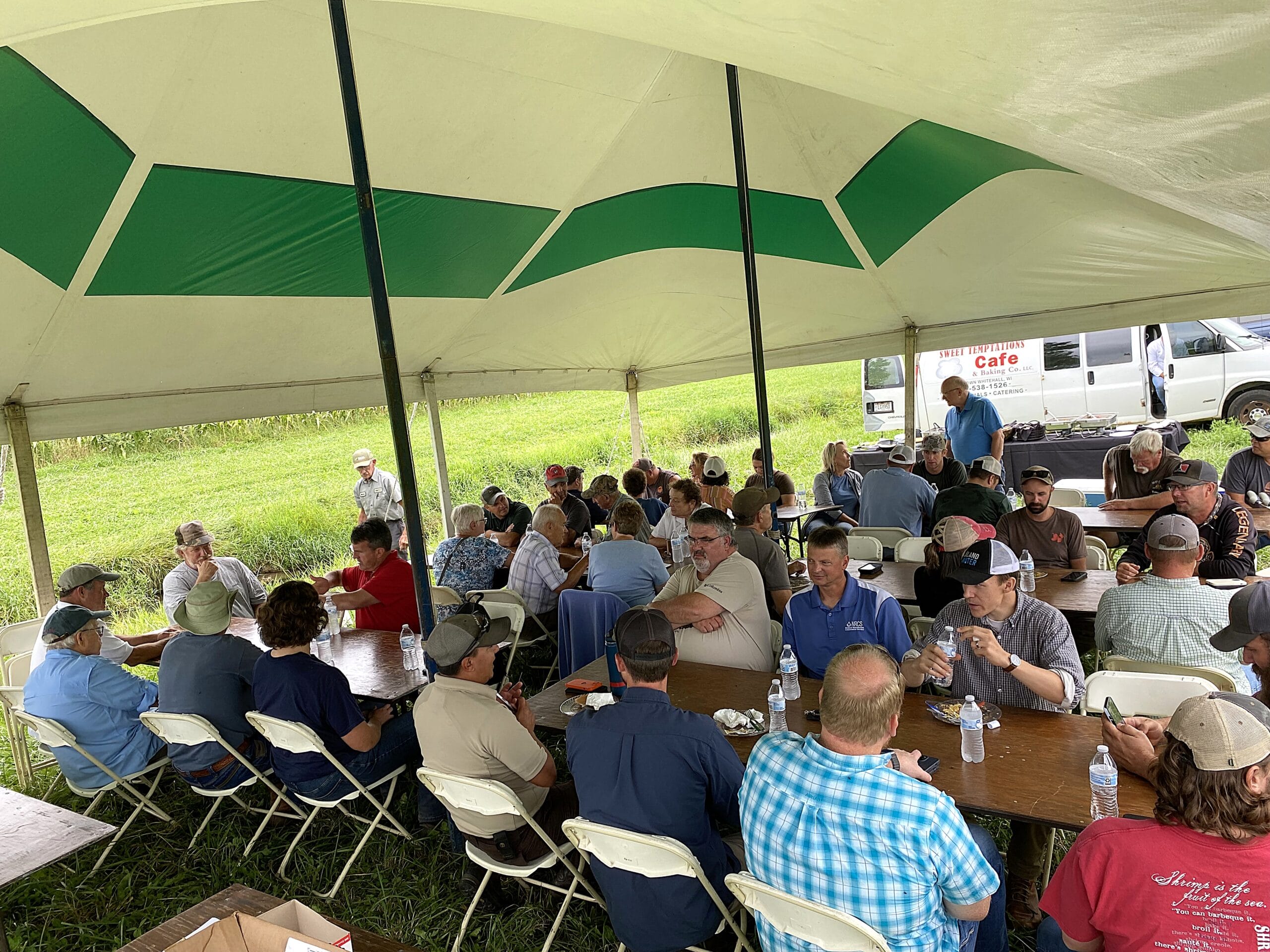Without willing, conservation-minded landowners, very few stream restoration projects would happen in the Driftless Area.
Over 90% of Driftless trout streams flow through private land, so building relationships and educating landowners about the benefits of stream restoration are critical first steps in assuring that stream restoration work will continue.
With this reality in mind, the Driftless Area Restoration Effort recently partnered with the Buffalo and Trempealeau County Conservation Departments to host a “Lunch and Learn” event August 29 on the banks of Swinns Valley Creek for landowners in the two counties.
Thirty landowners and 17 resource professionals attended the event, where they enjoyed a catered meal, participated in a panel discussion with lots of questions and answers, and walked a stretch of stream where they could see the sloping of the banks and habitat features.
One of the learning components built into the event was the location, because the farm that hosted the gathering is a model for good conservation practices.

There is cropland on each side of the stream, but the stream is protected by a generous grass buffer which is cut for hay. Overall, the setting served as a great example of how a restored trout stream can be integrated into a working agricultural operation.
Planning the panel discussion was critical to the event’s success. In the past, we have often relied on resource professionals to be the “up-front” people who speak about stream projects and their benefits, as well as funding sources such as USDA programs under the Farm Bill. For this event, we invited a panel of landowners (all farmers) who have previously had restoration work done on their streams. Resource professionals were invited to attend and simply build rapport with the community.
As Buffalo County Conservationist Cale Severson said, “You don’t address suspicion of government among farmers by having a bunch of people from the government talk at them.”
This peer-to-peer approach proved effective, with audience members asking a wide range of questions related to easements, costs, timeline, agricultural management and property values. Several landowners indicated that they would like TUDARE or the county conservationist to visit their property and assess their trout stream.
The Lunch and Learn event was made possible by a mini grant from the National Wildlife Federation. One of the grant conditions was that TUDARE distribute pre- and post-event surveys to the participants because the foundation is particularly interested in understanding what kind of events or programs “move the needle” to affect the adoption of conservation practices by landowners. The surveys also provided the event planners with important feedback about what works and what doesn’t.



